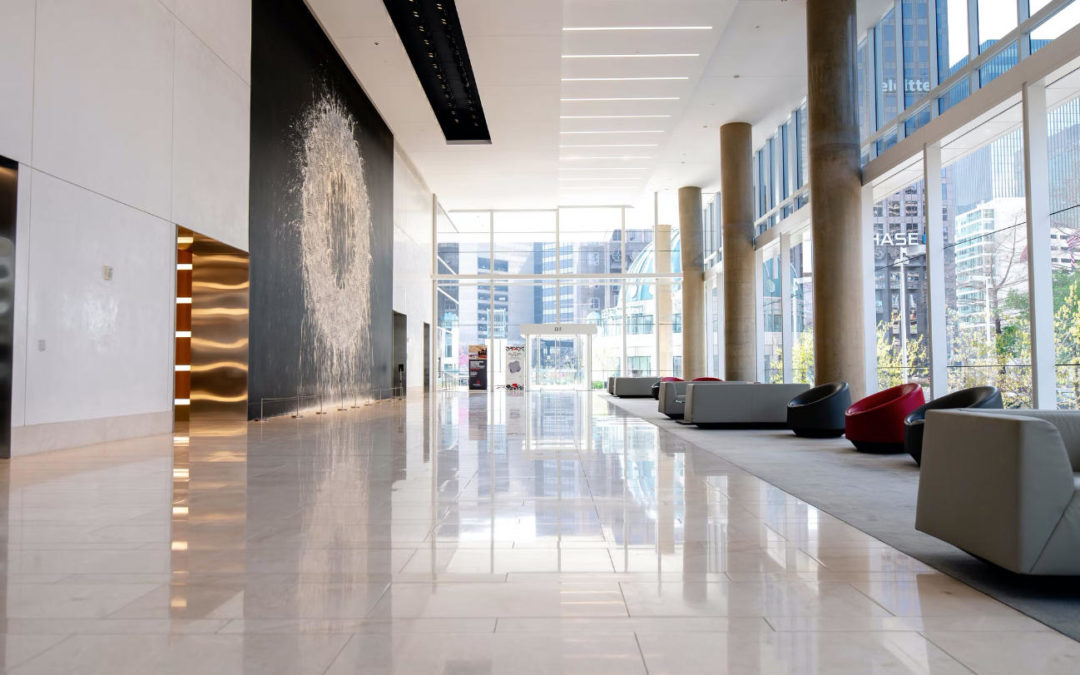A deep clean and a deliberate staging setup can really punch up the appeal of a commercial property.
In our previous post we talked about how staging a home for a specific type of customer or lifestyle creates more interest, and even increases the perception of the home’s value.
The concept is similar for commercial spaces, and in this post we’ll discuss some tips and ways that doing this can help you sell faster.
First off though, it’s worth noting that one of the main reasons staging benefits a showing is that it shows a prospective buyer how the space could be used. That offers flexibility, because it matters a bit less what the space had been used for up until this point.
Or to put it another way, if you suspect a certain type of business buyer would be interested in the space if only it were presented the right way, it doesn’t matter that the office space isn’t that type of business right now.
Commercial Staging Tells The Story and Makes The Investment Clearer.
While certainly it’s true that staging a home helps the potential buyer see themselves in the space living in it, the sense of making an investment is more overt with a commercial property.
The buyer expects to make money off the purchase or lease in a way that they may not with a home.
From the outside of the building to the inside space, staging and deep cleaning a commercial property sets the tone and demonstrates how the space could function for such a business.
It might mean positioning a reception desk a certain way, or setting up a personal office to look authoritative and comfortable.
It can also signal the type of buyer you are looking for.
The difference between a budget property and something more upscale can be accentuated with how aspects like these are handled.
Things To Consider With The Decor
Setting up the decor for a commercial showing is more than putting some plants in the corners to make the space look alive.
By considering the type of buyer you’re looking to attract and what their needs are, you can set the space up to accentuate features that most appeal to those needs. For instance…
- If your buyer values privacy and professionalism most, accentuating meeting rooms, private offices, and heavy doorways check those boxes.
- If your buyer is most interested in having somewhere to grow their operation for years to come, the space needs to look big and open, and they need to be able to envision adding cubicles, desks, or other work spaces to the biggest rooms in the building.
- If your buyer is in a creative industry they may be looking for a more casual and comfortable looking place. Focus on avoiding hard corners or rigidly square furniture and tables. Rounded tables and modern chairs/sofas are important for a comfortable vibe. When it comes to lighting, warmer colors may be better here than harsh white light.
Preparing The Exterior
While it may not be realistic to advise changing the landscaping design altogether, there is a checklist you can follow to ensure you aren’t working against yourself at the start of the showing before they are even inside.
Resolve anything that creates a slip hazard or takes away from the impression that the property is well cared for.
- No cracks in the pavement of the parking area or the sidewalks around the building
- Make sure the parking lines are clear, vibrant, and not faded. Nothing creates the impression of an old space that doesn’t receive much maintenance more than faded or crumbled parking lines.
- If there are stairs, make sure they are clean, free of chips or broken corners, and that plants are trimmed back and don’t overlap anything.
- Metal railings, trim, and doorways should look clean and free of corrosion.
- Make sure windows are clean and free of fingerprints, build up, and even bird poop (it happens).
Make sure the entryway looks inviting and alive.
- Any plants should be healthy, green, and recently watered. (People notice when the soil is dry and it’s a subtle note that works against things.)
- The grass and landscaping should be crisp, well tended to, and professional looking.
- Neutral colors may not be as exciting, but they also avoid being disagreeable to visitors during the showing — especially as they enter. If they see strong colors they don’t like this early in the process, they’ll be thinking, “Great, I already see I’ll have to repaint all this…”
The Value Of A Deep Clean, Even For The Commercial Inspection
While “how clean the place is” is not formally part of what a commercial inspector is assessing, cleanliness does give them some cues that play into everything else they look at.
Mold, grime, dust, or other buildup in corners or on lower walls can be a signal to that inspector, and get them thinking things like:
- Well, if this room has been neglected to this degree there may also be issues with _______. (And then more scrutiny goes into those things.)
- Unkempt bushes, break room and kitchen areas that aren’t well maintained, dirty bathrooms, etc. can raise concerns about pests and plumbing issues.
- Dirty, dusty, or faded electrical outlets can imply the entire electrical system is dated and perhaps not reliable — whether that’s actually the case or not.
Since an inspection — whether on a home or a business property — is a crucial part of the buying process and one that can unearth info that can potentially dissuade a buyer, this part is worth giving its due consideration.
Your seller’s agent will likely be able to help manage the staging aspects if you’re willing to put in some effort yourself for their ideas.
Regarding the cleaning, call us today to discuss your property and receive a quote!

